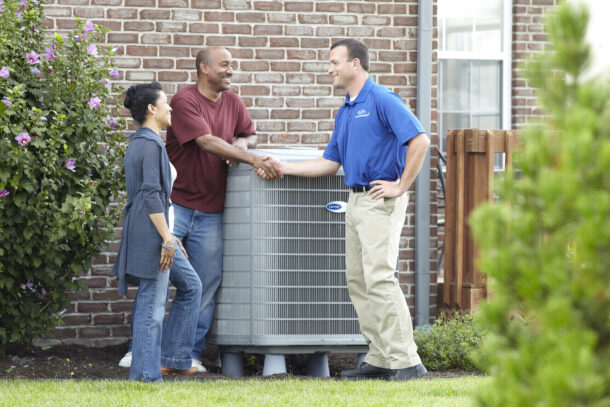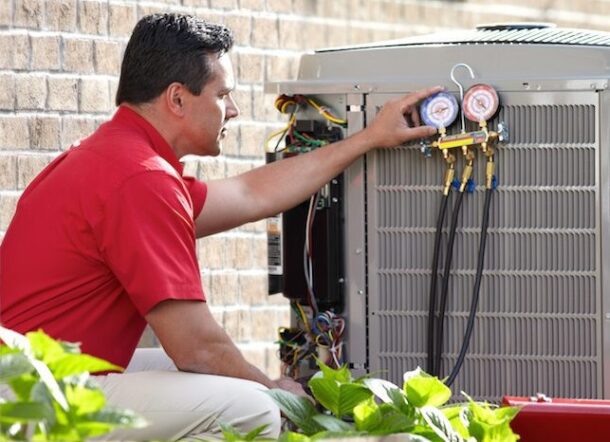When the silence of a smoothly running HVAC pump is replaced by an unsettling hum, it’s not just an annoyance; it’s a call to action. An HVAC pump, the heart of your heating and cooling system, requires more than a glance and a nod. It demands vigilant care and precise maintenance.
While most see it as just another component in their HVAC system, the savvy homeowner recognizes it as the pivot upon which comfort and cost-efficiency balance. This article is an arsenal of expert advice poised to equip you with the know-how to keep that critical equipment in prime condition.
Here, you’ll learn not just to respond to HVAC pump problems, but to prevent them and ensure that a broken HVAC pump is a scenario you’ll rarely, if ever, face.

-
Regular Inspection Schedules
To keep your HVAC pump running without a hitch, set up a regular inspection schedule. It’s as vital as taking your car for check-ups.
Start by marking your calendar for a bi-annual inspection. When you peek inside the workings of your HVAC system during these check-ins, you’re looking for any signs that things aren’t as they should be.
Look out for leaks, listen for strange noises, and feel for excessive vibration. Catching these early signs of wear can mean the difference between a quick fix and a full-blown repair job.
-
Keep It Clean
Dirt and debris are the nemeses of any HVAC system. Ensuring your HVAC pump and its surroundings stay clean isn’t just about aesthetics. It’s about performance and longevity.
A clean pump doesn’t have to work as hard, which means it uses less energy and is less likely to give up on you when you need it most. Make it a routine to clear away leaves, dust, and anything else that doesn’t belong. This simple act of HVAC care keeps your system breathing easy and your home comfortably warm or cool, depending on the season.
-
Lubricate Bearings Properly
Think of lubricating the pump’s bearings as oiling the wheels of your bicycle. It makes for a smoother ride. Your HVAC pump needs this kind of attention to run without friction.
Without proper lubrication, bearings can wear out faster and lead to HVAC pump problems down the line. Use the manufacturer-recommended lubricant and follow their guidelines for how often to apply it. This small, easy step can prevent a world of hassle and ensure your pump stays in tip-top shape.
-
Monitor HVAC Pump Seals
The seals on your HVAC pump are the unsung heroes, keeping everything contained and running smoothly. But when they start to go, you could be looking at leaks, and nobody wants that.
Regularly checking these seals can save you from the trouble of water damage or a broken HVAC pump. If you spot moisture or drips, it’s time to act. Replacing a seal is much cheaper than replacing a pump, so keep a watchful eye on these critical components.
-
Check Alignment
When the alignment between your HVAC pump and the motor strays off course, it’s like driving a car that’s veering to one side; you’re heading for trouble. Misalignment can cause undue strain on your system and lead to wear and tear that could end in a breakdown.
Use a straightedge or a laser alignment tool to ensure everything is lined up correctly. This isn’t just about preventing a broken HVAC pump; it’s about keeping your system running efficiently and your energy bills in check.

-
Monitor System Pressure and Flow
Your HVAC pump needs to hit the right notes when it comes to pressure and flow. You want to make sure your pump isn’t working too hard or taking it too easy. If the pressure’s too high or the flow too low, it’s like a warning light on your car’s dashboard: something’s not right.
You can find the ideal pressure and flow levels in the user manual. Keep a regular check on these, and you’ll help your pump perform its best, avoiding any HVAC pump problems before they start.
-
Maintain Drive Belts
Just like the chain on a bike, the drive belts in your HVAC system are what connect the power from the motor to the pump. If they’re too tight, too loose, or worn down, you won’t be going anywhere fast.
Check the tension and look for any cracks or wear. If you spot signs of aging or damage, it’s time for a replacement. Keeping your drive belts in shape means your system runs smoothly, and that helps keep those energy bills from climbing.
-
Verify Electrical Connections
Loose or damaged electrical connections are like loose laces on a sneaker; you could trip up at any moment. A well-running HVAC system relies on solid electrical connections.
Make it a habit to check for any signs of overheating or corrosion. If you’re not sure what to look for, this heating and cooling company can help. A professional can spot issues you might miss and can ensure that everything’s tight and right.
-
Implement a Predictive Maintenance Program
Predictive maintenance is like having a crystal ball for your HVAC system. Instead of waiting for problems to happen, you use tools to predict and stop them in their tracks.
Vibration analysis and thermal imaging can tell you a lot about the health of your HVAC pump. They let you see the unseen, like if parts are getting worn out or if something’s getting too hot. By catching these early signs, you can get ahead of the game.
And when it comes to the types of HVAC pumps, each one has its own signs to watch for. With predictive maintenance, you’re not just fixing. You’re strategizing for a future where emergency repairs are rare and your HVAC system is always at its best.
Optimal Performance Awaits
Your HVAC pump stands sentinel to your comfort, and with these tips, its longevity and efficacy are in your hands. Don’t let the disruption of a broken pump catch you off guard. Arm yourself with the knowledge to maintain, preempt, and when necessary, address the varied types of HVAC pumps with confidence.
And remember, proper HVAC care is not a luxury; it’s a necessity. For those hungry for more wisdom, our blog is a treasure trove of tips. Don’t stop here; let your quest for peak HVAC maintenance continue with us.




Join the conversation: